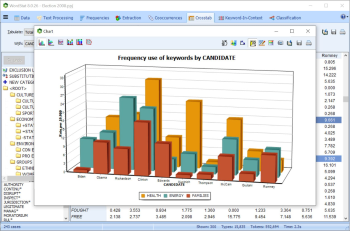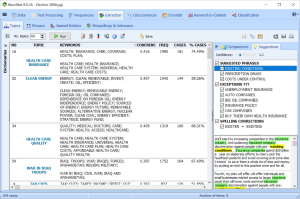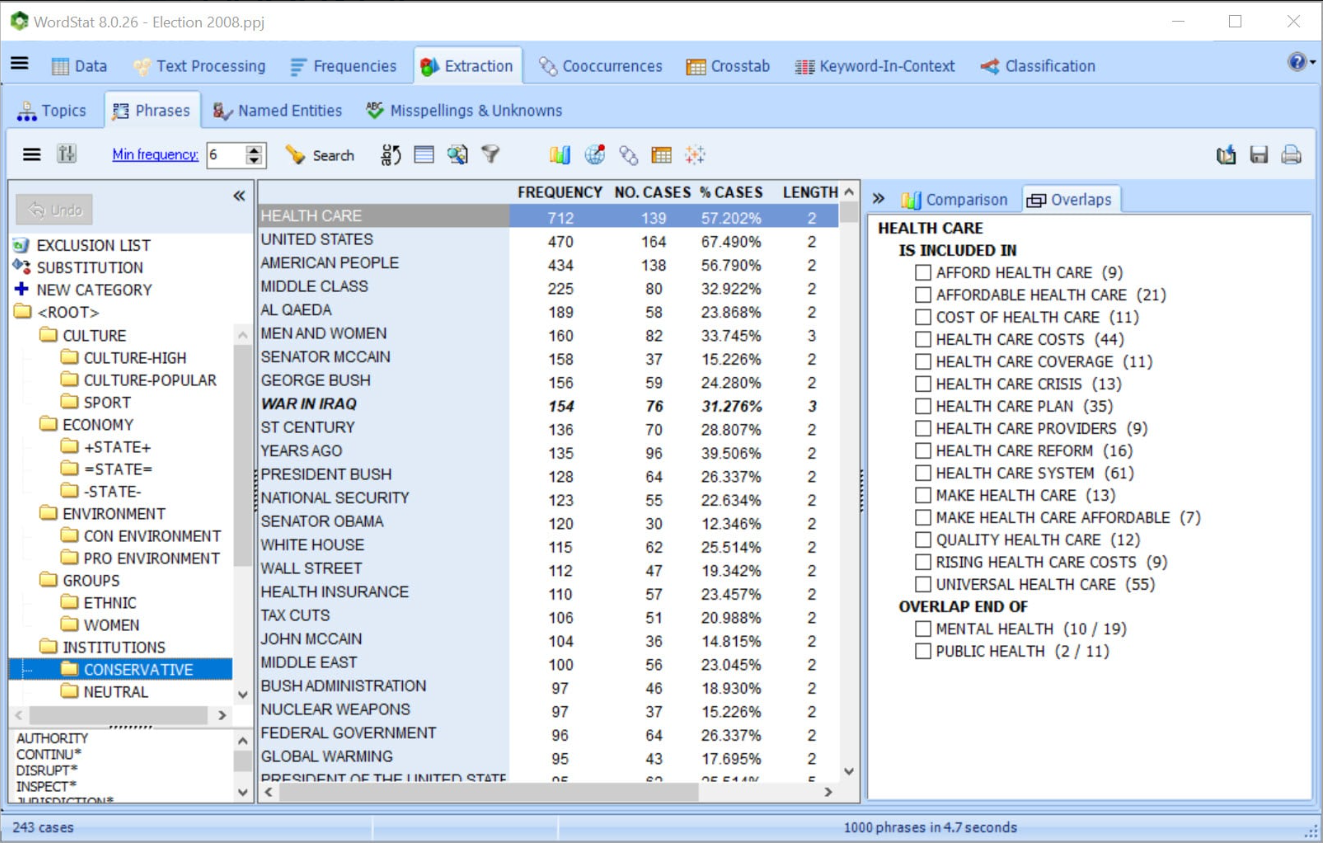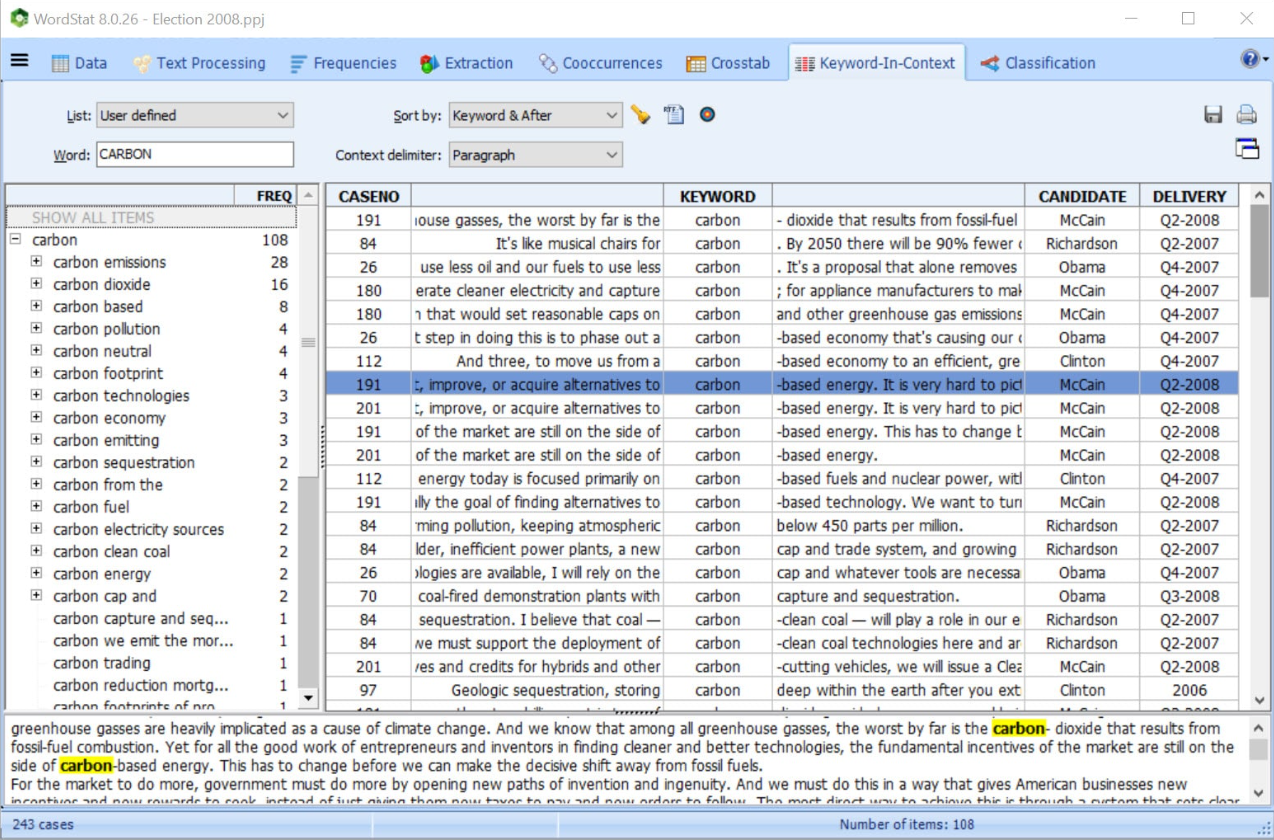

Whether you need text mining tools for fast extraction of themes and trends, or careful and precise measurement with state-of-the-art quantitative content analysis tools. WordStat‘s seamless integration with SimStat – our statistical data analysis tool – QDA Miner – our qualitative data analysis software – and Stata – the comprehensive statistical software from StataCorp, gives you unprecedented flexibility for analyzing text and relating its content to structured information, including numerical and categorical data.
WordStat can be used by anyone who needs to quickly extract and analyze information from large amounts of documents. Our content analysis and text mining software is used for:

Analyze large amounts of unstructured information with WordStat. The software can process 25 million words per minute, quickly extract themes and automatically identify patterns using clustering, multidimensional scaling, proximity plots and more.

Quickly and easily extract meaning from large amounts of text data using Explorer mode especially made for those with little text mining experience. In one click, you can extract the most frequent words, phrases and the most salient topics in your documents.

Explore relationships between unstructured text and structured data such as dates, numbers or categorical data for identifying temporal trends or differences between subgroups or for assessing relationships with rating or other kinds of categorical or numerical data with statistical and graphical tools.

Get a quick overview of the most salient topics from large text collections by using state-of-the-art automatic topic extraction techniques.

Explore relationships among words or concepts and retrieve text segments associated with specific connections.

Import Word, Excel, HTML, XML, SPSS, Stata, NVivo, PDFs, as well as images. Connect and directly import from social media, emails, web survey platforms, and reference management tools.

Achieve full text analysis automation using existing dictionaries or create your own categorization model with words, phrases, proximity rules and more.

Build your dictionary faster with tools for extracting common phrases and technical terms and for quickly identifying in your text collection misspellings, synonyms, antonyms and related words.

Relate unstructured text data with geographic information and create interactive plots of data points, thematic maps, and heatmaps, along with a geocoding web service for transforming location names, postal codes and IP addresses into latitude and longitudes.

Easily export text analysis results to common industry file formats such as Excel, SPSS, ASCII, HTML, XML, MS Word and graphs such as PNG, BMP and JPEG.

Combine WordStat with a state-of-the-art qualitative coding tool (QDA Miner) for more precise exploration of data or more in-depth analysis of specific documents or extracted text segments when needed.

Develop and optimize automatic document classification models using Naïve Bayes and K-Nearest Neighbours.

Automatically extract named entities that can be added to the categorization dictionary using an easy drag-and-drop-operation.

Verify or dig deeper into your analysis by going back to the text from almost any feature, chart or graph. You can use the Keyword Retrieval or Keyword-in-Context features to retrieve sentences, paragraphs or whole documents.

Use Python script and its full range of open-source libraries to preprocess or transform text documents for analysis in WordStat.